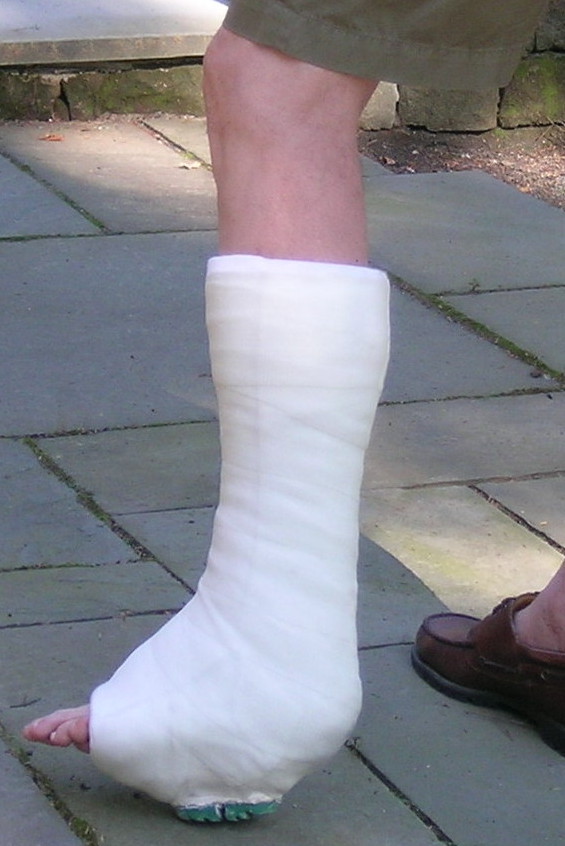PHYSICIANS ARE ONLY HUMAN, AFTER ALL;
THEY AREN’T CORRECT 100% OF THE TIME
Experimental Swedish treatment replaces surgery
for torn Achilles tendon, but orthopedist disagrees
SECOND OPINION RECOMMENDED
By David Maril
When our doctors tell us something, we take their advice seriously. But in a fast moving world where treatments and medications change, it’s important to remember that doctors are only human and not right 100 percent of the time.
It’s always a good idea to get second opinions for some- thing major. It’s also vital to do your own research so you can ask the right questions.
Prescription drugs often have side effects and it’s vital to understand what you are taking. The evidence that arthritis painkillers may increase the risks of heart problems and strokes should make people more aware mistakes in treatments can be made.
Sometimes as patients we forget we should play a key role in the decisions over methods of treatment. Whenever someone talks about patients being railroaded into something against their better judgment, I think of an experience I had as a player in a racquetball league, after suffering a torn Achilles tendon.
In the midst of a game in an early-morning league, I felt as if my opponent had slammed me in the back of the leg with his racquet — but he wasn’t anywhere near me. I could walk but it was as if I only had partial control of my right leg when I’d take a step.
An orthopedic surgeon confirmed it was a torn Achilles tendon and said the standard procedure was to operate and put the leg in a full cast for two months.
Almost reluctantly, after delivering grim details of wearing a full-leg cast for a couple of months after surgery, he added there was an experimental treatment that had been effective in Sweden.
They had achieved success without operating, by putting the leg in a smaller cast that rises just to below the knee and points the foot at a particular angle. The doctor said they had never done this in his orthopedic practice however and he didn’t recommend it.
Still, the more I thought about it, the more certain I was I’d try anything to avoid surgery. When I told him my decision, he kept trying to talk me out of it but finally agreed to try this method.
GETTING AROUND ON CRUTCHES
They put the leg in the cast and the first month of getting around on crutches began.
For four weeks, I kept wondering whether I’d made the right decision, because they’d put so much doubt into my head about treating the injury this way. I wondered whether it wouldn’t heal properly and I’d be walking around with a bad limp for the rest of my life.
This experimental treatment called for a replacement cast to be put on after four weeks.
After the doctor took the first cast off, he looked at the leg, and called in three of his partners in the office to examine me.
I was holding my breath, waiting for bad news. Finally, one of them remarked that so far, the leg looked as if it was healing OK.
The plan was for four weeks in the second cast and then I would have to wear a right shoe with a half-inch lift in the back so that the tendon wouldn’t be stretched too much when walking around.
When the day came to remove the second cast, I was very nervous about taking that first step.
I got up from the chair, put my right foot down and the leg seemed to sink into the floor, as if my foot was not standing on the ground. So much atrophy had set in, the leg itself was sickening to look at, it was so thin.
THE TENDON DIDN’T SNAP
However, when I finally took a step, and the tendon didn’t snap or anything like that, I began walking very slowly and could see that unless I did something really crazy, it would be OK.
For the next three weeks, I followed a therapy routine that included swimming and stretching exercises.
By the third week, I was back to walking well enough so that there was only a slight trace of a limp.
When I returned to the doctor for a final appointment, he called his three partners back in to examine the leg.
One told me I was a pioneer because they had never treated this injury in this manner. My doctor admitted to me that the leg was much further along than if I had had the surgery eight weeks earlier.
As I was leaving, I turned and asked my doctor what he’d recommend to the next person who came in with this type of injury — surgery or the method I had used.
When he answered, without even hesitating, “Surgery,” I left as quickly as my healing leg would allow.
davidmaril@voiceofbaltimore.org
“Inside Pitch” is a weekly opinion column written for Voice of Baltimore by David Maril.
CHECK OUT LAST WEEK’S “INSIDE PITCH” COLUMN: click here
…and read archived Dave Maril columns by clicking here.







May 18th, 2014 - 1:40 AM
[…] Sun lost its competitive edge. CHECK OUT LAST WEEK’S “INSIDE PITCH” COLUMN: click here …and read archived Dave Maril columns by clicking here. […]